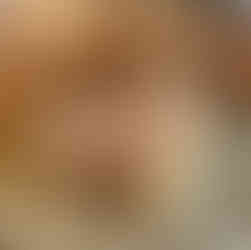Sombre of face sadly we headed for the border, wishing we were off on the catamaran to the French valley instead! I bade our fellow hikers goodbye, opting to breakfast then pack. (Simon chose the opposite!)
Passing sheep and cattle farms we ticked off more local fauna, guanacos, Patagonian hares and foxes, rhea, more condor plus other birds our driver pointed out. Border reached, customs, passport control (that all important slip of paper duly noted then binned!) followed by Argentine passport control and customs! Slightly perturbed; no transfer; the tiny white car (complete with elastic boot), turned out to be us!
Goodbye Chile
Hello Argentina
Initial bumpy track, gave way to speedy highway, with much needed pit stop for bathroom and coffee; gratefully consumed with the sandwich and pastries we’d been urged to take at breakfast. Circling through beef and sheep ranchos, the snow capped mountains reappeared as we reached multi-faceted roofed modern el Calafate and the Argentine side of the Patagonian glacial range.
Named after the local bush (Berberis buxifolia) with yellow flowers and dark blue berries, very common in Patagonia: calafate, Spanish for caulk, the town started life as a wool traders shelter; trade destined for Europe. Only officially recognised in 1927, now a tourist town for the glacial national parks. Yep we will visit (and trek on) the Perito Moreno glacier, tomorrow.
Checked in, our underwhelming tired, mired in the 80s hotel behind us we headed for lake argentino being side tracked by the local dinosaur/glacial Spanish museum. Mostly in Spanish we followed (or rather got lost in translation) the town’s journey from fossil discovery with dinosaurs, the local Tehuelches tribes, cave paintings, el Dragon’s pirating (local people saving? raids on the Spanish), through Darwin et all exploring, sheep farming finally attracting early 20th century Spanish, German Slav and British migration fleeing WW1. Sadly leading to annihilation/assimilation of the local peoples, sub-human conditions strikes and following brutal military rule didn’t help! (My Spanish isn’t up to this but I do a mean google!)
After, intrigued by the odd metal straw combo of completely dried herb filled cups topped with hot water I’d seen drivers and guides imbibing in Patagonia, I took the chance to try the local matte ritual. Verdict: pretty nice!
Finally a human!!! Successfully managed to sort my blog storage issues (well I still may have to renegotiate on return) Si wifi enabled, blogging can now resume!
First choice of lamb restaurant closed, we headed across the way. Simon declared it his best ever, even surpassing Grandma Doreen’s; high praise indeed!
Lunch boxes ordered, and paid for, making your own from breakfast strictly forbidden. Early to bed, another ridiculously early tour start looming!
The border plus some guanaco we saw on the drive to the border, along with patagonian/european hares ( at issue introduced from Europe and now somewhat of a pest) , rheas, condors, a Patagonian grey fox all of which I was too hopelessly inept to photograph!)
(Chilean customs; border & passport control plus the all important exit form; Argentinan border and sign)
Unrepresentative photos of old el Calafate; it's actually sprawling and modern with most houses having multiple ridges on their roofs, what is famous for apparently!
The dinosaur to present day museum
(Dinosaur; el dragón rescues some indigenous Patagonians)
Matte Argentinan style (actually nice, herby and refreshing with hint of caffeine)
A cup full of the dried herbs is continuously topped up with hot water whilst you sip through the metal filtered straw; it's clearly got a ritualistic element to it. All the Patagonian drivers and some guides drank it.
Dinner; best Welsh/Patagonian lamb!
We stayed at Kosten Aike, El Calafate in Argentina.































Komentarze